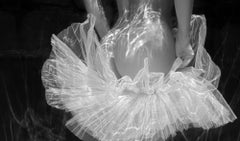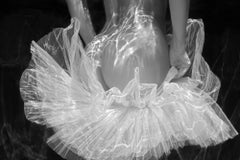Tutu Skirt Alex Sher
2010s Photorealist Black and White Photography
Archival Paper, Archival Pigment
2010s Photorealist Black and White Photography
Archival Paper, Archival Pigment
2010s Photorealist Black and White Photography
Archival Pigment, Archival Paper
2010s Photorealist Black and White Photography
Archival Pigment, Archival Paper
2010s Photorealist Black and White Photography
Metal
Recent Sales
2010s Photorealist Black and White Photography
Archival Pigment
2010s Photorealist Black and White Photography
Archival Paper, Archival Pigment
People Also Browsed
2010s Contemporary Nude Photography
Archival Pigment
21st Century and Contemporary Modern Black and White Photography
Archival Pigment
2010s American Modern Music Stands
Brass
21st Century and Contemporary Italian Modern Bookcases
Metal
1980s Contemporary Black and White Photography
Archival Paper, Photographic Film, Photographic Paper, Black and White, ...
21st Century and Contemporary Italian Modern Screens and Room Dividers
Paper
21st Century and Contemporary Modern Nude Prints
Rag Paper, Giclée, Archival Ink
1990s Young British Artists (YBA) Black and White Photography
Silver Gelatin
2010s Conceptual Nude Photography
Archival Pigment
2010s Conceptual Nude Photography
Archival Pigment
2010s Minimalist Landscape Paintings
Watercolor, Lithograph, Paper
2010s Contemporary Figurative Photography
Archival Paper, Archival Pigment
21st Century and Contemporary Black and White Photography
Silver Gelatin
2010s Contemporary Black and White Photography
Archival Paper, Photographic Paper, C Print, Color, Polaroid
21st Century and Contemporary Contemporary Nude Photography
Photographic Paper, Pigment
2010s Contemporary Color Photography
Archival Paper, Archival Pigment, Digital Pigment
Tutu Skirt Alex Sher For Sale on 1stDibs
How Much is a Tutu Skirt Alex Sher?
Alex Sher for sale on 1stDibs
Alex Sher is an award-winning American underwater fine art photographer whose admiration of feminine sensuality heralded him to worldwide acclaim.
Sher was born in Ukraine in 1962 and started taking photographs at the age of twelve. He graduated from Kyiv University in 1984. Two years later, he volunteered as medical personnel to support the Chernobyl nuclear disaster recovery. When asked about that time, Sher says "Having no clue how much radiation you are getting makes you appreciate every breath — pretty much what you feel underwater."
Sher started showing his photographs in the early 1990s; however, he considered himself an amateur until his work was stolen from an exhibition in Kyiv.
Sher immigrated to the United States with his family in 1995 and currently resides in Los Angeles. As a former biologist and an ocean diver, Alex is deeply concerned with the decimation of kelp forests along the California Pacific Coast.
Sher’s underwater photographs emerged in 2011. In 2015, after participating in a photo competition, his works were exhibited in Paris at the Louvre Museum and later at museums in London, New York, Chicago, Los Angeles, San Francisco, and other major cities. Sher's first personal photo exhibition was held in 2016 in Los Angeles by the Bruce Lurie Gallery. Since then, he has had six exclusive exhibitions, has been in numerous group exhibitions, and has participated in major US art fairs.
Sher's artistic style is marked by the transition from photographing marine wildlife at the very beginning to figurative nudity, with a majority of monochrome black and white works. His most recent pieces showcase minimalism and abstraction with bright colors through a quiet, eye-catchy, and charming combination of figurative and abstract art.
Sher is an excellent underwater coach who trains his models on how to control their breath and buoyancy, as well as their feelings. He also teaches spiritual blending with the water and modeling techniques for different underwater cameras.
Sher generously shares his artistic and technical innovations. His ideas inspire underwater photographers around the world. His first photo book, Mermaids, was published in 2018. He has been represented by Touchon Gallery since 2019.
Find a collection of Alex Sher art today on 1stDibs.
(Biography provided by Touchon Gallery)
A Close Look at Photorealist Art
A direct challenge to Abstract Expressionism’s subjectivity and gestural vigor, Photorealism was informed by the Pop predilection for representational imagery, popular iconography and tools, like projectors and airbrushes, borrowed from the worlds of commercial art and design.
Whether gritty or gleaming, the subject matter favored by Photorealists is instantly, if vaguely, familiar. It’s the stuff of yellowing snapshots and fugitive memories. The bland and the garish alike flicker between crystal-clear reality and dreamy illusion, inviting the viewer to contemplate a single moment rather than igniting a story.
The virtues of the “photo” in Photorealist art — infused as they are with dazzling qualities that are easily blurred in reproduction — are as elusive as they are allusive. “Much Photorealist painting has the vacuity of proportion and intent of an idiot-savant, long on look and short on personal timbre,” John Arthur wrote (rather admiringly) in the catalogue essay for Realism/Photorealism, a 1980 exhibition at the Philbrook Museum of Art, in Tulsa, Oklahoma. At its best, Photorealism is a perpetually paused tug-of-war between the sacred and the profane, the general and the specific, the record and the object.
“Robert Bechtle invented Photorealism, in 1963,” says veteran art dealer Louis Meisel. “He took a picture of himself in the mirror with the car outside and then painted it. That was the first one.”
The meaning of the term, which began for Meisel as “a superficial way of defining and promoting a group of painters,” evolved with time, and the core group of Photorealists slowly expanded to include younger artists who traded Rolleiflexes for 60-megapixel cameras, using advanced digital technology to create paintings that transcend the detail of conventional photographs.
On 1stDibs, the collection of Photorealist art includes work by Richard Estes, Ralph Goings, Chuck Close, Audrey Flack, Charles Bell and others.
Finding the Right Black-white-photography for You
There’s a lot to love about black and white photography.
The unique and timeless quality of a black and white photograph accentuates any room. Some might argue that we’re naturally drawn to color photography because it’s the world we know best. This is a shared belief, particularly in the era of camera-phone photography, editing apps and the frenetic immediacy of sharing photos on social media. But when we look at black and white photography, we experience deep, rich shadows and tonal properties in a way that transfixes us. Composition and textures are crisp and engaging. We’re immediately drawn to the subjects of vintage street photography and continue to feel the emotional impact of decades-old photojournalism. The silhouettes of mountains in black and white landscape photography are particularly pronounced, while portrait photography and the skylines of urban cityscapes come to life in monochrome prints.
When decorating with fine photography, keep in mind that some color photographs may not be suitable for every space. However, you can be more daring with black and white photos. The gray tones are classic, sophisticated and generally introduce elegance to any corner of your home, which renders black and white prints amazingly versatile.
Black and white photography adapts to its surroundings like a chameleon might. A single large-scale black and white photograph above the sofa in your living room is going to work with any furniture style, and as some homeowners and designers today are working to introduce more muted tones and neutral palettes to dining rooms and bedrooms, the integration of black and white photography — a hallmark of minimalist decor — is a particularly natural choice for such a setting.
Another advantage to bringing black and white photography into your home is that you can style walls and add depth and character without worrying about disrupting an existing color scheme. Black and white photographs actually harmonize well with accent colors such as yellow, red and green. Your provocative Memphis Group lighting and bold Pierre Paulin seating will pair nicely with the black and white fine nude photography you’ve curated over the years.
Black and white photography also complements a variety of other art. Black and white photos pair well with drawings and etchings in monochromatic hues. They can also form part of specific color schemes. For example, you can place black and white prints in colored picture frames for a pop of color. And while there are no hard and fast rules, it’s best to keep black and white prints separate from color photographs. Color prints stand out in a room more than black and white prints do. Pairing them may detract attention from your black and white photography. Instead, dedicate separate walls or spaces to each.
Once you’ve selected the photography that best fits your space, you’ll need to decide how to hang the images. If you want to hang multiple photos, it’s essential to know how to arrange wall art. A proper arrangement can significantly enhance a living space.
On 1stDibs, explore a vast collection of compelling black and white photography by artists such as Mark Shaw, Jack Mitchell (a photographer you should know), Berenice Abbott and David Yarrow.






